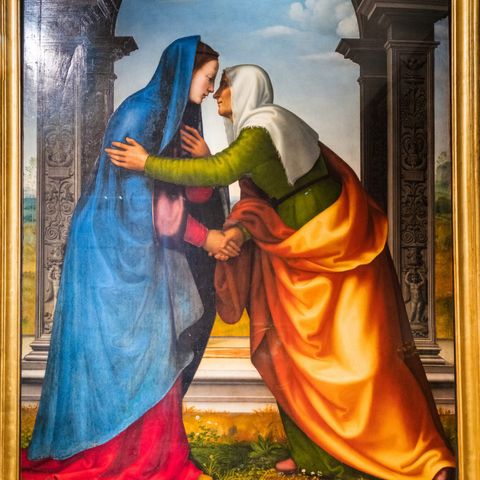VM 07 | Dr. Sandra Glahn, Dr. Matthew Milliner, Christine Calareso Bleecker | Art History 101

Download and listen anywhere
Download your favorite episodes and enjoy them, wherever you are! Sign up or log in now to access offline listening.
Description
In this conversation, Dr. Sandra Glahn, Dr. Matthew Milliner, and Christine Calareso Bleecker discuss the absence of depicting the body of the first person of the Trinity in Christian art...
show moreKey Takeaways:
- The absence of depicting the body of the first person of the Trinity in Christian art has shaped perceptions of women.
- The resurgence of depicting the Trinity in art led to the physical depiction of God and the caricature of the bearded male figure.
- Depicting the Father physically undermined the understanding that both men and women fully image God.
- Visual literacy is important for identifying Virgin stories in art and understanding their significance. Images have the power to heal and restore and can meet people in surprising and unexpected ways.
- The Christian tradition offers a range of images that address both lament and hope.
- The Virgin of the Passion and Our Lady of Perpetual Help are icons of love in the face of violence.
- Images of the Virgin Mary can be powerful in overcoming pornography and teaching reverence.
- Mary has a historical tradition as a leader in the church.
- Misconceptions about Mary Magdalene perpetuate bad theology and demean women.
Visual Museum of Women in Christianity
The purpose of this collaborative project is to create a curated, permanent visual exhibit of women in the history, ministry, and piety of early, Byzantine, and medieval Christianity that will be available online for researchers, educators, and interested laypersons.
The goal of this multi-year project is to make the visual record of women in ministry and leadership available free of charge and unencumbered by permission requirements, and to include short teaching elements to guide the audience through the constitutive and pivotal role of women throughout Christian history.
Together with the visual story, the accompanying narrative will make it possible for patrons to learn about women throughout history and across the globe and their unique contributions to the life and faith of the church…
A history that remains mostly untold.
Follow the Visual Museum on Social Media:
Instagram: visualmuseum.gallery
Facebook: visualmuseum.gallery
Twitter: visual_museum
TikTok: visualmuseum.gallery
YouTube: @VisualMuseum
Episode Sponsor:
The Alabaster Jar is brought to you by The Center for Women in Leadership, a newly formed 501©3 nonprofit organization whose purpose is to equip women in a context that is biblically rooted, theologically robust, and ethnically diverse to thrive as leaders in the academy and the Church. Follow them on Instagram @leadershipwithoutapology. Learn more about The Center for Women in Leadership at: https://www.leadershipwithoutapology.org/.
Information
| Author | CWL |
| Organization | Lynn Cohick |
| Website | - |
| Tags |
Copyright 2024 - Spreaker Inc. an iHeartMedia Company

Comments